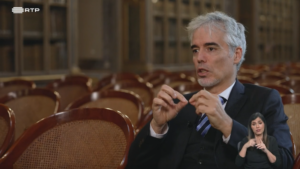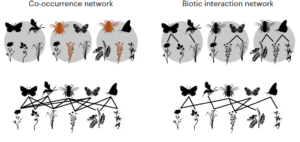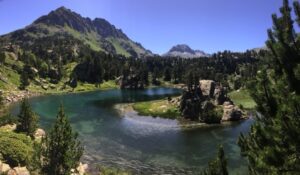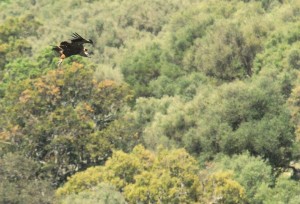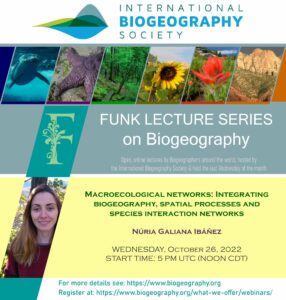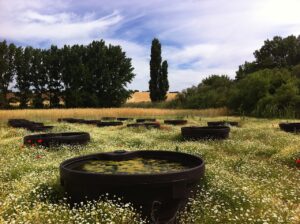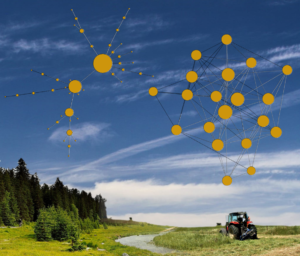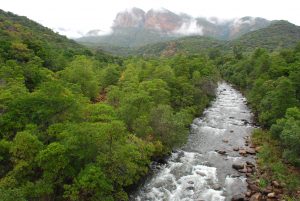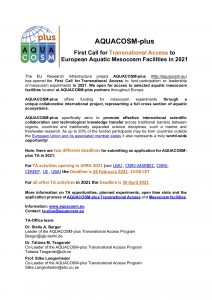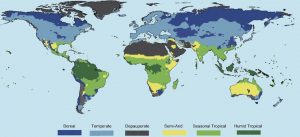Biosphere Program on RTP 2 (TV channel in Portugal) addressing issues related to Tropical Ecology and Biodiversity. Miguel Araújo refers to some of the major threats to these systems and the regularities regarding trophic structures that are being investigated in the laboratory. https://www.rtp.pt/play/p12688/biosfera . . . [ Read More ]
Novel approach to deciphering ecological interactions
Visual representation of a network of co-occurrence and the corresponding network of biotic interactions A new study led by researchers at Miguel B. Araújo Lab has pioneered a method for interpreting the complex network of species interactions within ecosystems. Their findings, published today in Nature Ecology and Evolution, offer a significant breakthrough in ecological research, showcasing a . . . [ Read More ]
Position available: PhD candidate in Community Ecology and Biogeography of Aquatic Ecosystems
Project description Global change is driving biodiversity loss at unprecedented rates constituting a global threat to human welfare and ecological stability. Consequences of such changes (e.g., warming, drought, salinization) are particularly pervasive in aquatic ecosystems (e.g., ponds, lakes, rivers). Ecosystem services (i.e., benefits provided to people, both directly and indirectly) by . . . [ Read More ]
Position available: PhD candidate in Community Ecology and Systematic Conservation Planning
Project description Biodiversity is declining at unprecedented rates, with far-reaching consequences for the functioning of ecosystems and human well-being. The loss of any species can have profound consequences given that all species are entangled in complex networks of interactions with other species. Thus, any species loss can promote a deep reorganisation of the communities and ecosystems. . . . [ Read More ]
Funk Lecture Series by Nuria Galiana on Macroecologica Networks
. . . [ Read More ]
Call for access to Iberian Pond data (2022)
Two calls are now open to enable access to the Iberian Ponds data, under EC AQUACOSM-PLUS project, for collaboration on the following topics: Spatial and temporal variation in pond communities across a temperature gradient Climate change effects on Iberian aquatic food webs To apply follow the links . . . [ Read More ]
Human disturbances affect the topology of food webs
https://youtu.be/N4D--Wj3JvM What do galaxies and molecular structures have in common? Or trade between countries, communications on the Internet, and trophic relationships within ecosystems? One answer is that they all involve nodes interconnected by flows of mass and energy. In other words, they are networks. The study of networks has revealed intriguing regularities. For example, it is . . . [ Read More ]
Miguel B. Araujo Lab – Resumo de investigação passada e reflexão sobre investigação futura
Quando um leigo me pergunta sobre o objeto da minha investigação, nem sempre é fácil de explicar numa frase. Na verdade, quem trabalha em biodiversidade trabalha com sistemas complexos. Logo, para entender estes sistemas, para os modelar, para projetar dinâmicas futuras, são diversas as ramificações por onde se estende a investigação. Consciente da dificuldade em sintetizar a diversidade muitos . . . [ Read More ]
First call AQUACOSM-PLUS
AQUACOSM-plus offers funding for mesocosm experiments through a unique collaborative international project, representing a full cross section of aquatic ecosystems. It is a good opportunity to visit and work in our Iberian-wide distributed pond mesocosm facility set up to examine the effects of climate change on aquatic biodiversity. For more information read here. . . . [ Read More ]
Biogeographic analysis of trophic structures reveals the signature of climate and people
Community trophic structure typical of seasonal tropical climates https://youtu.be/1WwGVnNFJOY In Spanish here Climate determines the arquitectures of trophic structures and human activities simplify them. This is the main conclusion of a study published today in Nature Communications, by Manuel Mendoza and Miguel B. Araújo. Using the geographic distributions and feeding . . . [ Read More ]
